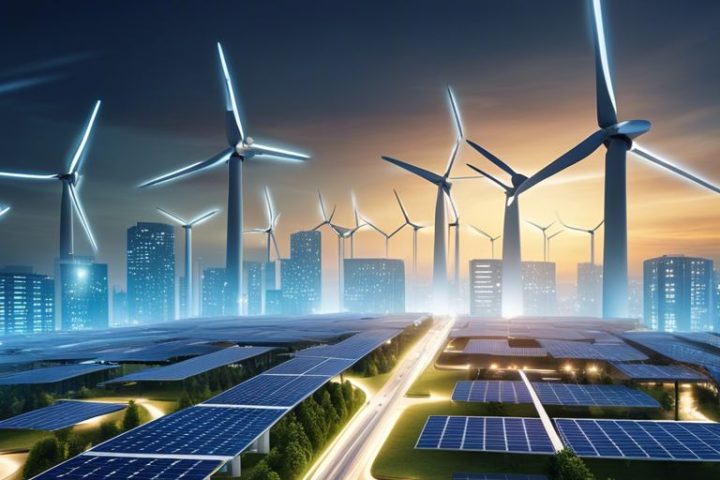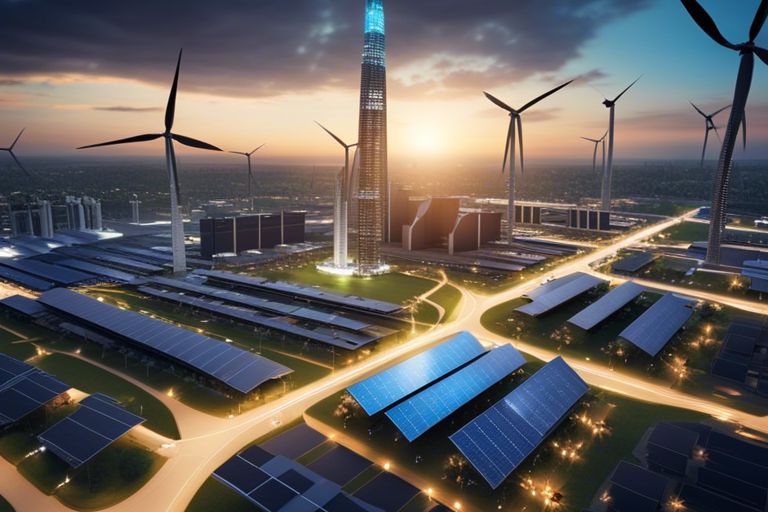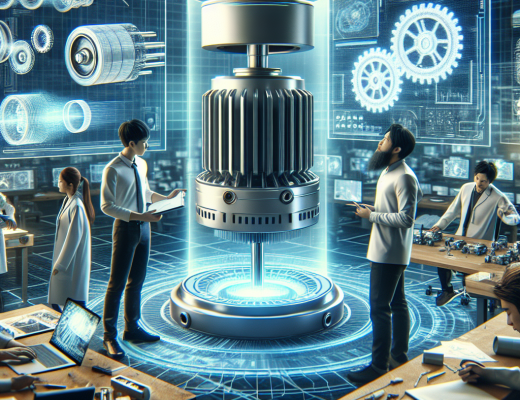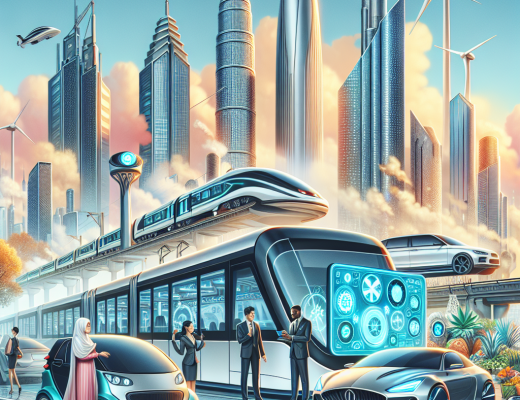Generation of electricity is an important part of modern life, but have you ever considered how microgrids are changing the game? These small-scale power systems are revolutionizing the way we generate and distribute energy. In this post, you will probe into the world of microgrids, learning about their importance in enhancing resilience, increasing efficiency, and promoting sustainability in power generation. Let’s explore how microgrids are shaping the future of energy production and consumption.
Defining Microgrids
For a clearer understanding of the role of microgrids in power generation, it’s important to define what exactly microgrids are and what sets them apart from traditional power grids.
What are Microgrids?
Microgrids are localized energy systems that can operate independently or in conjunction with the main power grid. They consist of distributed energy resources, such as solar panels, wind turbines, batteries, and generators, that can generate, store, and manage electricity. What makes microgrids unique is their ability to disconnect from the main grid during outages or peak demand periods, ensuring a stable and reliable power supply to the local area they serve.
Key Characteristics of Microgrids
Microgrids are characterized by their ability to efficiently integrate renewable energy sources, reduce greenhouse gas emissions, and enhance grid resilience. One of the key characteristics of microgrids is their flexibility and adaptability, allowing them to support a variety of energy resources and easily incorporate new technologies. Microgrids also offer improved energy efficiency and lower transmission losses compared to traditional centralized power systems, making them a sustainable and cost-effective solution for power generation.
Defining microgrids as self-sufficient and resilient energy systems showcases their potential to revolutionize the way we generate and distribute electricity. By embracing microgrids, you can contribute to a more sustainable and reliable energy future while reducing your dependence on traditional power grids.
The Evolution of Power Generation
Traditional Grid Systems
An vital aspect of understanding the role of microgrids in power generation is to recognize the evolution of traditional grid systems. Initially, power generation relied on centralized systems where electricity was produced at large power plants and distributed across vast networks to reach consumers. These systems were efficient in delivering electricity to homes, businesses, and industries on a massive scale.
The Rise of Decentralized Energy
Generation after generation, advancements in technology have led to the rise of decentralized energy sources. This shift introduces a fundamental change in the way electricity is generated and distributed. Decentralized energy refers to the capability to produce power on a smaller scale, often closer to where it is consumed. It includes renewable energy sources like solar panels, wind turbines, and batteries, which offer a more sustainable and environmentally friendly alternative to fossil fuels.
Benefits of Microgrids
Increased Energy Efficiency
One of the significant benefits of microgrids is the increased energy efficiency they provide. With the ability to generate power close to where it is consumed, you can reduce transmission and distribution losses that typically occur in centralized power systems. This means more of the energy produced is actually delivered and used, resulting in cost savings and a more sustainable energy model.
Enhanced Reliability and Resilience
Resilience is a crucial aspect of microgrids that sets them apart from traditional power grids. Resilience refers to the ability of a system to withstand and recover from disruptions, such as natural disasters or cyber attacks. Microgrids can operate independently from the main grid during emergencies, ensuring that critical facilities like hospitals or emergency shelters have continuous power supply when the main grid is down.
Enhanced reliability and resilience are particularly important in areas prone to extreme weather events or regions where power outages can have severe consequences. By incorporating microgrids into the power generation mix, communities can increase their overall energy security and better protect themselves against unexpected disruptions.
Environmental Advantages
With a growing focus on sustainability and reducing carbon footprints, microgrids offer distinct environmental advantages. By integrating renewable energy sources like solar panels and wind turbines into the microgrid infrastructure, you can decrease reliance on fossil fuels and decrease greenhouse gas emissions. This transition to cleaner energy not only benefits the environment but also helps to combat climate change and promote a greener future.
This shift towards more sustainable energy practices is crucial for combating environmental challenges. This is where microgrids play a vital role in promoting a more environmentally friendly approach to power generation and consumption, contributing to a cleaner and healthier planet for future generations.
Microgrid Applications
Not only are microgrids revolutionizing the way power is generated and distributed, they also offer a wide range of applications across various sectors. Let’s explore some of the key areas where microgrids are making a significant impact.
Remote and Off-Grid Communities
Remote and off-grid communities have long struggled with unreliable power supply, often depending on costly and environmentally damaging diesel generators. Microgrids provide these communities with a reliable and sustainable source of power, helping them reduce their reliance on fossil fuels and improve energy access for residents. Additionally, microgrids can enhance energy resilience in these communities, ensuring uninterrupted power supply even in the face of natural disasters or grid failures.
Commercial and Industrial Settings
On the other hand, microgrids are increasingly being adopted in commercial and industrial settings to enhance energy efficiency, reduce operational costs, and increase grid reliability. By integrating renewable energy sources and smart technologies, microgrids enable businesses to optimize their energy consumption, lower their carbon footprint, and gain more control over their power supply.
For instance, companies with critical loads that require uninterrupted power supply, such as data centers and manufacturing facilities, can benefit greatly from implementing microgrids. These systems provide a reliable backup power source during grid outages, minimizing the risk of disruptions and financial losses.
Military and Government Installations
One of the most crucial applications of microgrids is in military and government installations where reliable power supply is a matter of national security. Microgrids deployed in these facilities not only ensure continuous operations but also increase energy independence and security. These microgrids can operate autonomously and withstand cyber attacks or physical threats, providing a robust energy infrastructure for critical facilities.
Plus
Microgrids offer a wide range of benefits across different applications, from enhancing energy resilience in remote communities to ensuring national security in military installations. By integrating renewable energy sources, advanced control systems, and energy storage technologies, microgrids are paving the way for a more sustainable and secure energy future.
Technical Components of Microgrids
Keep in mind that microgrids consist of several key technical components that work together to ensure efficient power generation, distribution, and utilization. These components include generation sources, energy storage systems, and distribution and transmission infrastructure.
Generation Sources (Renewable and Non-Renewable)
Technical components of microgrids often include a mix of generation sources, with a growing emphasis on renewable sources such as solar, wind, and hydroelectric power. These sources harness natural elements to produce electricity, offering sustainable and environmentally friendly energy solutions. In addition to renewable sources, non-renewable sources like diesel generators can also be integrated into microgrids to provide backup power during times of low renewable energy availability.
Energy Storage Systems
Any discussion of microgrid components must highlight the importance of energy storage systems. These systems play a critical role in storing excess energy during periods of high generation for later use when generation levels are low. Popular storage technologies include lithium-ion batteries, pumped hydro storage, and flywheels, offering versatility and reliability in managing energy fluctuations within microgrid systems.
Systems are designed to optimize energy usage, ensuring a stable and continuous power supply even in the face of intermittent renewable energy sources or grid outages. Integrating energy storage systems into microgrids enhances their resilience and efficiency, making them an imperative component in modern power generation infrastructure.
Distribution and Transmission Infrastructure
On a broader scale, microgrids feature distribution and transmission infrastructure that enables the seamless flow of electricity within the system. This infrastructure includes cables, transformers, switches, and other equipment that facilitate efficient power distribution to various load centers. By implementing advanced technologies and smart grid solutions, microgrid infrastructure can intelligently manage energy flow, monitor system performance, and enable remote control for optimal operational efficiency.
Renewable energy sources like solar panels and wind turbines require specialized distribution infrastructure to connect them to the microgrid and ensure the smooth transfer of electricity. By investing in robust distribution and transmission infrastructure, microgrid operators can enhance system reliability, energy security, and overall performance, paving the way for a more sustainable energy future.
Challenges and Limitations
Regulatory Frameworks and Policy Barriers
Unlike traditional centralized power systems, microgrids face unique challenges due to varying regulatory frameworks and policy barriers. Any inconsistency in regulations and lack of clear policies can hinder the widespread adoption and implementation of microgrids. Without a cohesive regulatory environment, utilities, consumers, and other stakeholders may face uncertainty and delays in integrating microgrid systems.
Technical and Infrastructure Challenges
An effective functioning of microgrids relies heavily on seamless integration with existing infrastructure and overcoming technical hurdles. The integration of different renewable energy sources, energy storage systems, and smart grid technologies poses technical challenges that require expertise and investments to address. Ensuring reliable operation, grid stability, and cybersecurity are critical considerations in the development of microgrid infrastructure.
Expanding microgrid systems often requires significant upgrades to existing infrastructure, such as distribution networks and grid connections. The cost and complexity of retrofitting older systems or building new infrastructure can be a barrier to the scalability of microgrids.
Economic and Financial Hurdles
With Understanding the economic viability and financial hurdles associated with microgrid projects is crucial for their successful deployment. With varying upfront costs, financing options, and revenue models, navigating the financial landscape of microgrids can be complex. Any uncertainties related to return on investment, payback periods, and operational costs can deter investors and hinder project development.
Conclusion
With this in mind, you now have a better understanding of the role that microgrids play in power generation. From providing energy security and resilience to integrating renewable energy sources and optimizing efficiency, microgrids are revolutionizing the way we generate and distribute electricity. By learning about the benefits and challenges of microgrid technology, you are better equipped to appreciate its significance in the ever-evolving energy landscape.
As you reflect on the potential of microgrids to transform the energy sector, consider the implications for sustainability, reliability, and cost-effectiveness. By embracing this innovative approach to power generation, we can pave the way for a more resilient and sustainable energy future. Your newfound knowledge about microgrids empowers you to be an informed advocate for clean, reliable, and efficient energy solutions in your community and beyond.





